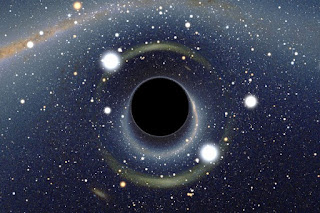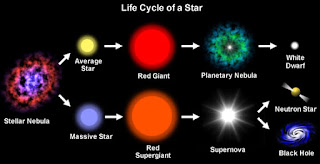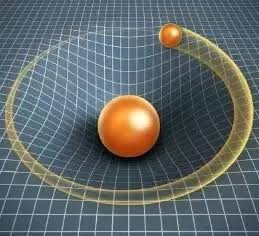BLACK HOLES⚫
What is a Black Hole?
A black hole is a place in space where gravity pulls so much that even light cannot get out. The gravity is so strong because matter has been squeezed into a tiny space. This can happen when a star is dying. Because no light can get out people can't see black holes. They are invisible. Space telescopes with special tools can help find black holes. The special tools can see how stars that are very close to black holes act differently than other stars.
Different Types Of Black Holes.
Black holes can come in a range of sizes, but there are three main types of black holes. The black hole's mass and size determine what kind it is. Black Holes are of following types:
1. Premordial Black Holes
2. Stellar
3. Super Massive
Buy at best deals:
These Black Holes are explained below:
1. Premordial Black Holes
The smallest ones are known as Premordial Black Holes. Scientist believe this type of Black hole is as small as a single atom but with the mass of a large mountain.
2. Stellar
The most common type of medium-sized Black Holes is called "Stellar". The mass of a Stellar black hole can be up to 20 times greater than the mass of the sun and can fit inside a ball with a diameter of about 10 miles. Dozens of Stellar mass Black Holes may exist within the Milky Way Galaxy.
3. Super Massive
The largest of the Black Holes are known as "Super Massive" Black Holes. Scientific evidence shows that in the centre of the Milky Way is a Super Massive Black Hole. These black holes have masses greater than 1 million suns combined and would fit inside a ball with the diameter about the size of the solar system. Scientific evidence suggest that every large galaxy contains a supermassive black hole at its centre. The supermassive black hole at the centre of the Milky Way galaxy is called Sagittarius A. It has a mass equal to about 4 million sons and would fit inside a ball with a diameter about the size of the Sun.
How Do Black Holes Form?
A common type of Black hole is produced by certain dying stars. A star with the mass greater than about 20 times the mass of our Sun may produce a Black Hole at the end of its life. In the normal life of a star there is a constant tug of war between gravity pulling in and pressure pushing out. Nuclear reactions in the core of the star produce enough energy and pressure to push outward. For most of star's life, gravity and pressure balance each other exactly, and so the star stable. However, when a star runs out of nuclear fuel, gravity gets The upper hand and the material in the core is compressed even further. The more massive the core of the star, the greater the force of gravity that compresses the material, collapsing it under its own weight.
• Premordial Black Holes are thought to have formed in early Universe, soon after the Big Bang.
• Stellar black holes form when the centre of a very message star collapses in upon itself. This collapse also causes a supernova, or an exploding star, that blasts part of the star into space.
• Scientist things supermassive black holes formed at the same time as the galaxy they are in. The size of the super massive Black Hole is related to the size and mass of the galaxy it is in.
How to do fitness test for senior citizens, click here: Get Fit
Top 5 games available in mobiles for free
Click here:. Daily Gaming
THANK YOU.









Learnt something new here👍👍
ReplyDeleteNice 👍
ReplyDeleteNice content bhai 👍👍👍🤟🤟🙏🙏💯💯💯
ReplyDeleteNow this is something interesting! ⏳⚡
ReplyDeleteNice content
ReplyDelete